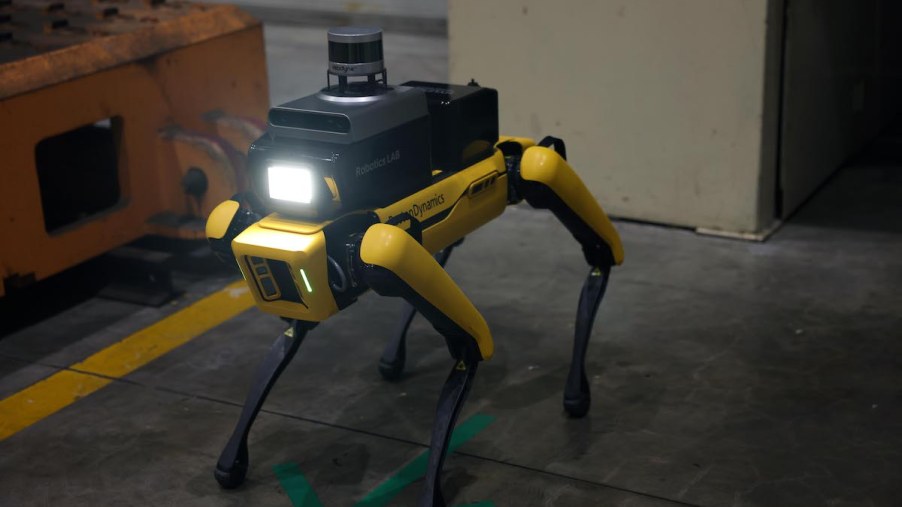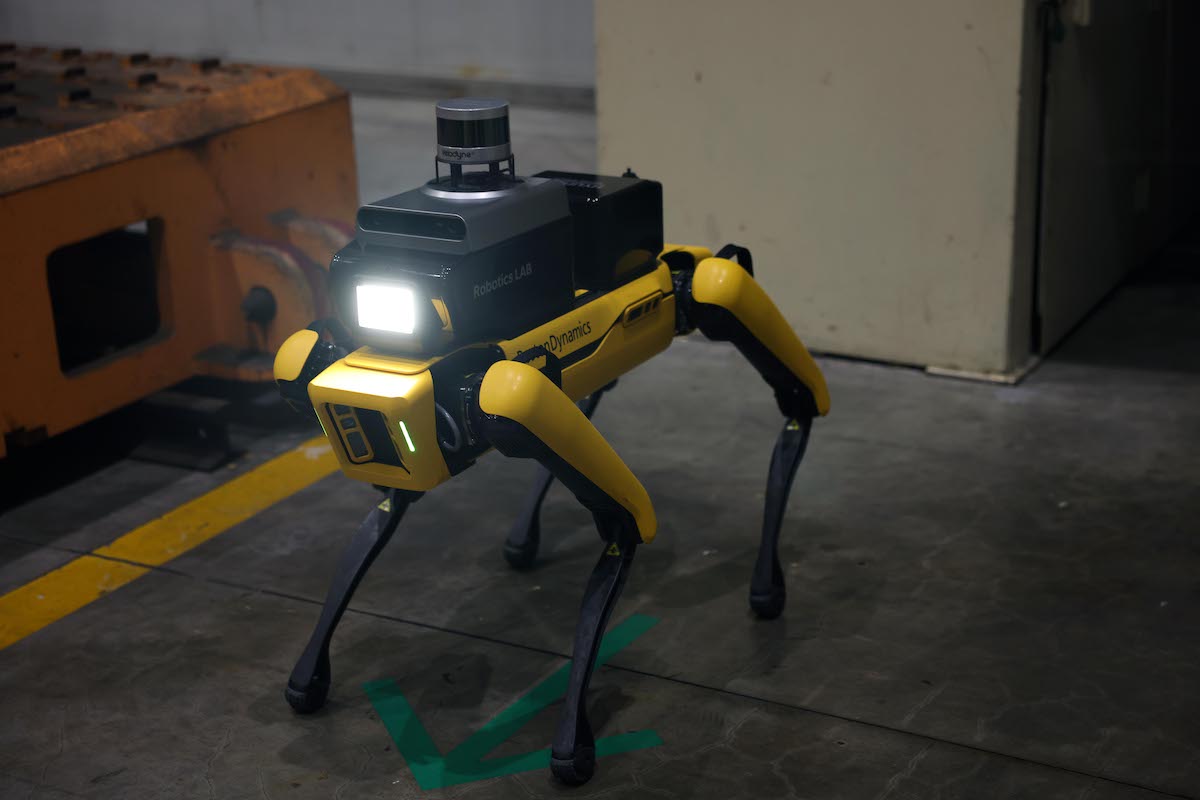
Hyundai Created a Robot Service Dog That Can Do Some Fancy Tricks
Hyundai is known for making high-quality cars and SUVs, such as the popular Palisade. But the company also spends a considerable amount of time and money on research and development — the South Korean automaker is even researching flying cars. It’s also dabbling in robotics. Since acquiring Boston Dynamics, Hyundai developed a robot service dog that can do some fancy tricks.
Hyundai bought Boston Dynamics
Boston Dynamics has shown up on the news and in viral videos, and the company has built robots for experiments and just for fun. Some of Boston Dynamics’ more advanced robots were even for sale, but the company never produced many. However, the company had plenty of research, technology, and experience under its belt.
That’s arguably why Hyundai paid just shy of $1 billion to buy Boston Dynamics in 2020. With that purchase, the automaker gained access to many of Boston Dynamics’ robots, especially one of its best-known, Spot. As the name implies, Spot resembled a dog. Although Spot didn’t see many sales, it became the inspiration for Hyundai’s robot service dog.
What prompted Hyundai to create a robot service dog?

Boston Dynamics is no stranger to robot dogs. But Spot was one of its latest creations before Hyundai bought the company.
Hyundai’s robot service dog, uninspiringly named Factory Safety Service Robot, is based on Spot, a four-legged robot. Like most robots, Spot had sensors that allowed it to see. That was one of its most useful tools because whoever controlled Spot could use it to look at things that were hard to reach or dangerous to get to. Like Spot, the new “quadruped robot is able to navigate through narrow spaces as well as identify blind areas that are hard to see with the human eye,” Hyundai says.
Hyundai also explains that the Factory Safety Service Robot (or “Robot” for short) “is equipped with diverse technologies suitable for autonomous patrol services within industrial site environments, including task management and deep learning-based vision technology.” Hyundai is testing the Robot at Kia’s South Korea plant to “support late-night security patrols and create a safer environment for workers.”
The robot service dog’s other features include “AI for detecting people, [a] thermal camera for detecting high-temperature risks, LiDAR for recognizing door openings, and navigation technology that allows it to move autonomously along designated areas within industrial sites — all of which can be expanded to other types of mobile robot platforms.”
All the fancy moves that Hyundai’s robot service dog can do
Hyundai’s robot service dog takes Spot’s features and improves upon them. One of the many upgrades to the new robot dog is its batteries. It now takes only about an hour to recharge fully. However, it’s still faster to swap out the old batteries for fresh ones.
Another upgrade is to the robot’s sensors, as it now has full-color vision, Motor1 reports. Although Hyundai’s robot dog doesn’t need color to see, that perk is helpful for the remote operator. On top of that, the operator also gets a new tablet, making controlling the robot easier.
However, Hyundai’s new robot dog doesn’t always need a human operator. It also moves more smoothly than Spot.
A robot dog wouldn’t be much of a dog if it couldn’t do tricks, and Hyundai’s robot dog has some fancy moves. It can move its legs independently, walk forward and backward up and down stairs, cross its legs, shimmy, sway, prance, and jump. You can view its full range of motion in the above video.


